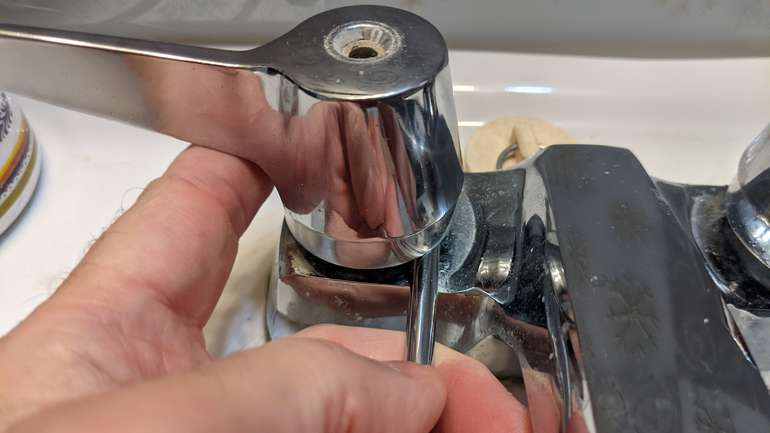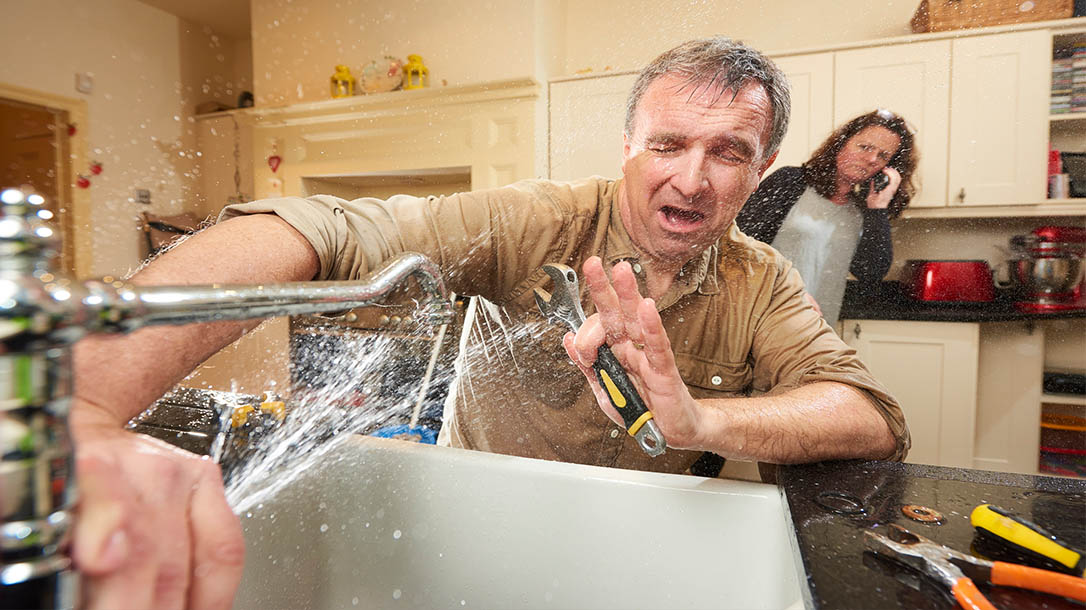Understanding the Relevance of Fixing a Broken Faucet
Understanding the Relevance of Fixing a Broken Faucet
Blog Article
We've stumbled on this post pertaining to Water Dripping from Faucet: Why and How to Fix below on the internet and concluded it made sense to relate it with you on this site.

Dripping taps could feel like a small inconvenience, yet their impact surpasses simply the inconvenience of the sound. From wasting water to incurring unneeded monetary prices and health and wellness risks, ignoring a leaking faucet can bring about different effects. In this write-up, we'll delve into why it's critical to resolve this common household issue quickly and successfully.
Waste of Water
Environmental Influence
Dripping faucets add significantly to water wastage. According to the Environmental Protection Agency (EPA), a single tap trickling at one drip per secondly can squander greater than 3,000 gallons of water annually. This not only strains water resources however also influences ecological communities and wildlife dependent on them.
Step-by-Step Guide to Repairing a Dripping Faucet
Tools Called for
Before attempting to repair a dripping faucet, collect the required tools, including a flexible wrench, screwdrivers, replacement parts (such as washers or cartridges), and plumber's tape.
Usual Tap Issues and Their Solutions
Recognize the kind of faucet and the certain problem creating the drip. Usual troubles consist of worn-out washing machines, corroded shutoff seats, or defective O-rings. Describe maker instructions or on-line tutorials for step-by-step assistance on repairs.
Financial Prices
Increased Water Bills
Beyond the ecological impact, trickling taps can blow up water costs substantially. The collected wastage in time converts into higher energy expenditures, which can have been avoided with prompt repair work.
Prospective Building Damage
Additionally, prolonged trickling can bring about damage to components and surfaces bordering the faucet. Water buildup can trigger staining, deterioration, and even architectural issues if left neglected, resulting in additional repair service prices.
Health and wellness Problems
Mold and Mold Growth
The consistent existence of dampness from a trickling faucet produces a suitable atmosphere for mold and mold growth. These fungi not only endanger interior air high quality but likewise pose health and wellness threats, specifically for people with respiratory problems or allergies.
Waterborne Conditions
Stationary water in trickling taps can come to be a breeding place for germs and various other pathogens, boosting the risk of waterborne diseases. Pollutants such as Legionella bacteria thrive in stagnant water, potentially resulting in severe illnesses when consumed or inhaled.
DIY vs. Expert Repair
Pros and Cons of Do It Yourself Fixing
While some may try to fix a dripping tap themselves, DIY repairs come with their own collection of difficulties. Without correct knowledge and tools, do it yourself attempts can exacerbate the issue or cause incomplete fixings, extending the trouble.
Advantages of Hiring an Expert Plumber
Employing a specialist plumber ensures that the underlying cause of the dripping faucet is dealt with efficiently. Plumbing professionals possess the knowledge and devices to identify and repair faucet issues effectively, saving time and reducing the risk of further damage.
Environmental Obligation
Specific Payment to Preservation
Taking duty for repairing leaking faucets straightens with broader efforts toward water conservation and environmental sustainability. Every individual's activities jointly make a substantial impact on preserving priceless sources.
Sustainable Living Practices
By focusing on prompt repair services and taking on water-saving practices, people add to sustainable living techniques that benefit both present and future generations.
Safety nets
Regular Upkeep Tips
To avoid dripping faucets, carry out regular upkeep such as cleansing aerators, inspecting for leaks, and replacing damaged components without delay. Additionally, take into consideration installing water-saving gadgets or updating to a lot more efficient fixtures.
Relevance of Prompt Services
Resolving leaking faucets as quickly as they're discovered prevents additional water wastage and prospective damage, inevitably saving both water and cash in the long run.
Effect On Residential Property Value
Understanding of Well-Maintained Residential Or Commercial Property
Keeping a residential property in good condition, consisting of addressing maintenance issues like dripping faucets, improves its viewed value and value among prospective buyers or renters.
Impact on Resale Worth
Characteristics with well-maintained plumbing components, including taps, command greater resale values in the property market. Attending to trickling faucets can contribute to a favorable impression during building inspections and settlements.
Verdict
Resolving a dripping tap surpasses plain convenience; it's an important step toward conserving water, decreasing financial costs, and safeguarding health and residential or commercial property. Whether through do it yourself fixings or professional assistance, doing something about it to take care of leaking faucets is a tiny yet impactful method to promote accountable stewardship of resources and add to a healthier, more lasting future.
Most Common Reasons for a Leaky Faucet and How to Stop the Drip
Whether it’s your kitchen faucet leaking or a bathroom faucet leaking, one leaky faucet can waste anywhere from three to 30 gallons of water every single day. If the constant drip-drip-drip doesn’t get your attention, your water bill will. The good news is that, by following a few simple steps, chances are pretty good you can fix the problem yourself.
Why is it dripping?
Before you start taking things apart, let’s break down some of the most common causes of a leaky faucet.
Bad O-ring.
A cartridge is a valve that controls the flow of water into the faucet spout. On cartridge faucets there’s an O-ring—the little disc attached to the stem screw that holds the faucet handle in place. If it’s loose or worn-out, it can cause your sink handle to leak. Of course, the cartridge itself could be worn out. If that’s the case, make sure you replace it with the exact same kind.
Corroded valve seat.
The valve seat connects the faucet and the spout. If the leak seems to be coming from the spout, it might be because a buildup of water sediment has corroded the valve seat.
Worn-out washers or seals.
A leaky spout could be caused by a bad washer that rests against the valve seat. It’s just a matter of time before friction takes its toll. It could also be the wrong size washer or one that’s been installed incorrectly. Water sediments can also corrode inlet and outlet seals.
Water pressure.
If the faucet only drips now and then, or when you turn the handles a certain way, you should probably check your home’s water pressure.
Loose or broken parts.
The adjusting ring and packing nuts in the stream screw can become loose over time, causing your sink handle to leak. Try tightening or replacing the packing nut. If the leak is coming from the pipes underneath the sink, you probably have a broken pipe or fitting. If that’s the case, you should definitely call a plumber.
Know your faucet.
Faucets come in a variety of types. Each one has its own assembly—and its own possible causes of leaks. Learning about the four most common kinds of faucets will help you know how to take them apart and make any repairs.
How to stop a leaky faucet
Fixing that leaky faucet doesn’t have to take a lot of time, money, or expertise. It’s usually a simple matter of replacing a worn-out washer or gasket, a loose O ring, or another part. Chances are really good you can do this yourself if you follow these simple steps.
Shut off the water.
Before you tackle the faucet, cut off the water supply to the sink. There should be one valve for hot and one for cold. Hand-turn them clockwise with your hands till they close. If there are no valves under the sink, head to the basement and shut off the main water supply to the house. Then turn on the faucet until it empties out the water that’s still in the line and you’re ready to start. It’s a good idea to cover the sink drain with a plug or a rag so you don’t lose any small pieces and parts while you’re working.

I am very intrigued by What Causes Leaky Faucets & How To Fix Them and I am hoping you appreciated the new page. Loved our blog? Please share it. Help somebody else check it out. Kudos for being here. Return soon.
Report this page